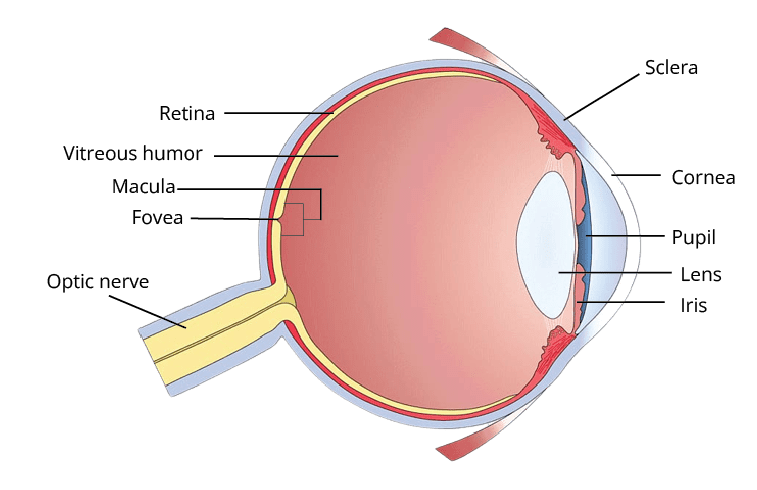Science Notes for Chapter 10 Human Eye and Colourful World Class 10 - FREE PDF Download
Human Eye and Colourful World Class 10 Science Chapter 10 CBSE Notes - 2025-26
FAQs on Human Eye and Colourful World Class 10 Science Chapter 10 CBSE Notes - 2025-26
1. What are the key points to remember in the Human Eye and Colourful World for quick revision?
For revision of Class 10 Science Chapter 10, focus on the structure of the eye, major functions (like accommodation and image formation), common vision defects, how light is refracted through a prism, atmospheric refraction effects (such as twinkling of stars and advanced sunrise), and the reasons behind the scattering of light (blue sky, red sunrises and sunsets). Summarising these core ideas helps reinforce the chapter’s key concepts.
2. How does the human eye adjust to view objects at different distances? (Revision summary)
The human eye adjusts its lens shape (curvature) with the help of ciliary muscles — a process called accommodation. This allows the eye to focus light on the retina for clear vision of both near and distant objects within a certain range, called the range of vision.
3. What are the main types of vision defects covered in Human Eye and Colourful World Class 10 notes?
The main vision defects include Myopia (nearsightedness), Hypermetropia (farsightedness), Astigmatism, Presbyopia (age-related), Cataract, and Colour Blindness. Each has specific causes and correction methods, such as using lenses or surgery.
4. What is the significance of atmospheric refraction in daily life?
Atmospheric refraction explains phenomena like the twinkling of stars, the visible sun before actual sunrise, and delayed sunsets. These effects happen because light bends as it passes through layers of the atmosphere with varying densities.
5. How does dispersion of white light by a prism help in understanding the colourful world?
Dispersion by a glass prism splits white light into its seven constituent colours, forming a spectrum. This explains natural phenomena like the formation of rainbows and demonstrates that white light is made up of multiple colours.
6. Why does the sky appear blue and sunsets appear red? (Concept summary)
The blue colour of the sky results from the scattering of shorter blue wavelengths by air molecules, while red sunsets occur because only longer red wavelengths reach our eyes when the sun is near the horizon, as other colours are more scattered.
7. What revision strategies can help score better in the Human Eye and Colourful World chapter?
For effective revision:
- Draw and label diagrams of the eye and refraction processes
- Create short notes on each key process (refraction, accommodation, defects)
- Review commonly confused concepts (e.g., myopia vs hypermetropia)
- Practice with past exam questions and summaries
- Explain the concepts to peers or use flashcards for self-testing
8. How does understanding the chapter as a concept map improve revision?
Creating a concept map connects major chapter themes visually — like the flow from the structure of the eye to vision processes, defects, light phenomena, and their atmospheric/real-world applications. This improves memory and helps spot interrelations quickly during revision.
9. Why is revising the Human Eye and Colourful World chapter important for board exam preparation?
This chapter is fundamental because it builds the foundation for light and optics, includes regularly tested phenomena, and develops reasoning skills useful for physics and biology. A good revision ensures students can attempt different question types confidently in the CBSE board exams.
10. What misconceptions should students avoid while revising this chapter?
Common misconceptions include confusing the correction methods for myopia and hypermetropia, thinking the eye forms an erect image, and assuming all colour vision issues are inherited. Careful reading of revision notes helps clarify and avoid these errors.




















 Watch Video
Watch Video





















